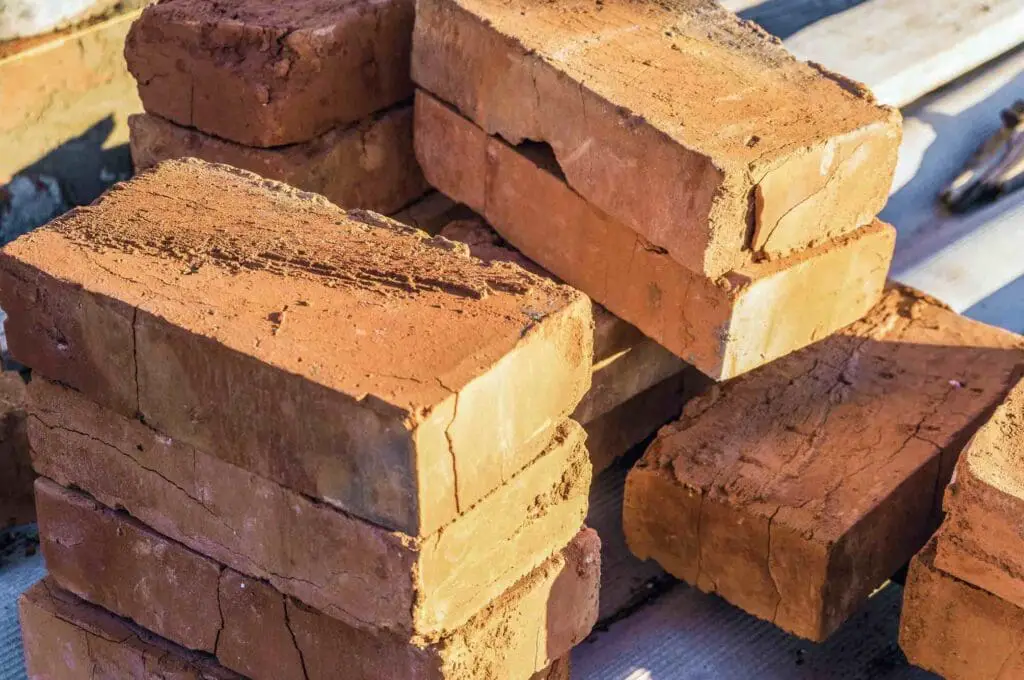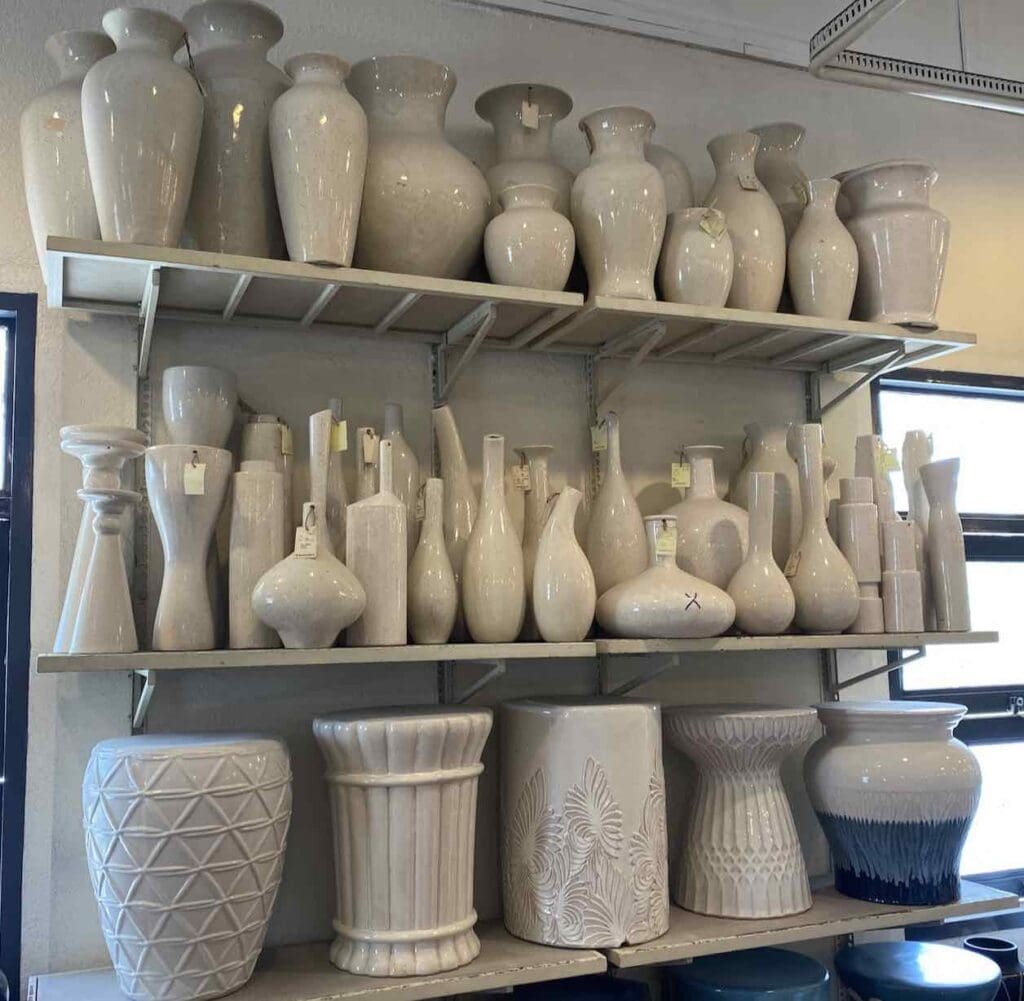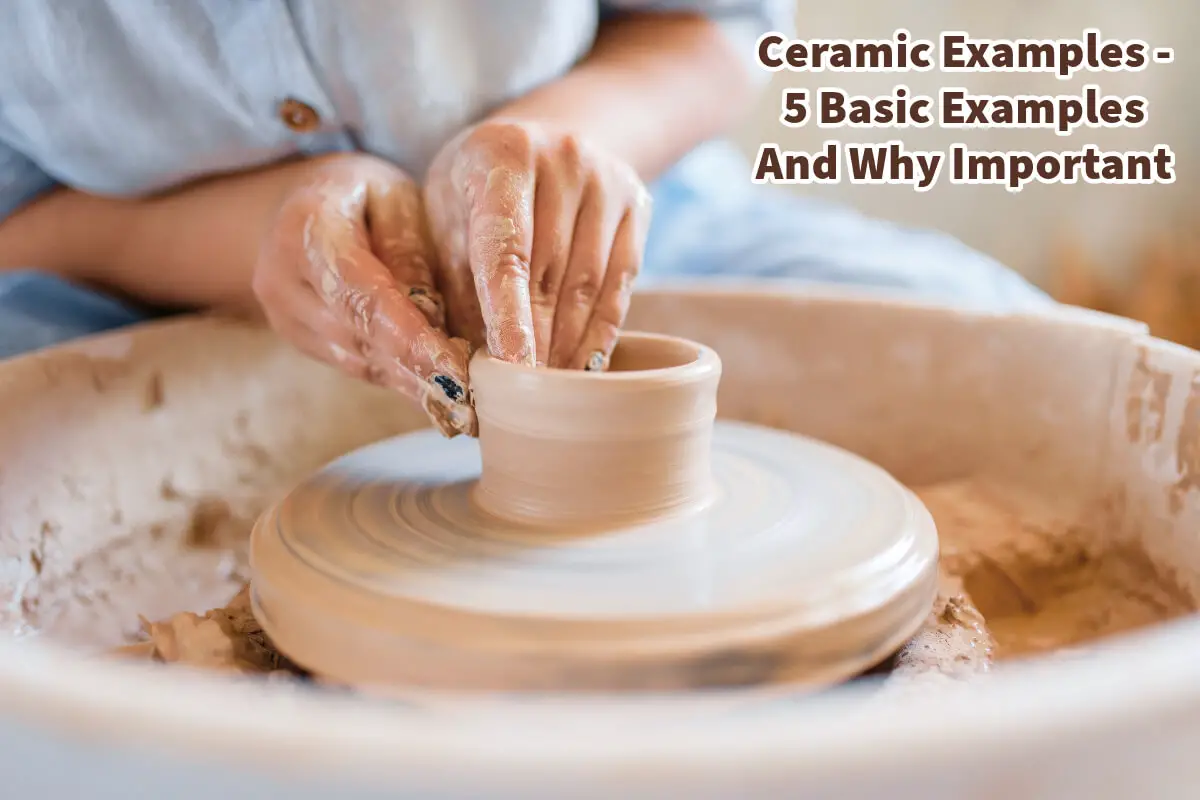For millennia, ceramics have been deeply woven into the fabric of human history. While most people may associate ceramics with items like pots, ornamental vases, or tableware, the scope of this material extends far beyond these familiar objects.
Ceramics can go from high-tech electronics to the building blocks of modern infrastructure; ceramics serve as essential elements in many applications. We will examine five fundamental ceramics categories— clay, bricks, tiles, glass, and cement—to understand their vital contributions to modern living and technological advancements.
Table of Contents
- Ceramics Examples: Exploring The Five Basic Types And Their Importance
- Electronics And Advanced Ceramics
- Frequently Asked Questions
- Related Content
Ceramics Examples: Exploring The Five Basic Types And Their Importance
Ceramics have been integral to human civilization for centuries. “ceramics” usually conjures images of pottery, decorative vases, and dinnerware. However, this versatile material has a much broader spectrum of uses that many may not be aware of.
From electronics to construction, ceramics are pivotal in modern technology and everyday life.
Read on as we delve into five basic types of ceramics—clay, bricks, tiles, glass, and cement—and explore why they are so crucial.
Clay

What Is It?
Clay is a naturally occurring material composed primarily of fine-grained minerals. It’s one of the oldest forms of ceramics known to humankind and forms the basis for pottery and several other ceramic items.
How Is It A Ceramic?
Clay undergoes a process known as “vitrification” when it is fired in a kiln. During this process, the material hardens and becomes impermeable, transforming into a ceramic.
Why Is It Important?
From cooking pots to artistic sculptures, clay is an essential building material across cultures. The versatility of clay extends beyond artistic expression; it has functional applications in various industries like wastewater treatment and cosmetics, among others.
Bricks

What Is It?
A brick is a block made from clay or a clay mixture, and it has been a primary building material for centuries.
How Is It A Ceramic?
Similar to clay, bricks become ceramics when fired in a kiln. The heat treatment hardens the bricks and makes them durable and weather-resistant.
Why Is It Important?
Bricks are a cornerstone of construction worldwide, providing structural integrity and aesthetic value. They are vital for everything from houses and schools to bridges and skyscrapers.
Tiles

What Is It?
Tiles are thin slabs covering surfaces like floors, walls, and roofs. They are made from ceramic materials like clay, porcelain, or glass.
How Is It A Ceramic?
When fired, tiles made from clay undergo a similar vitrification process, gaining a glazed or unglazed finish that makes them water-resistant and durable.
Why is it Important?
Tiles are not only functional, serving as a protective layer, but they also add aesthetic value to spaces. They are ubiquitous in homes, offices, and public buildings, offering durability and design versatility.
Glass

What Is It?
Glass is an amorphous material usually formed by rapidly cooling a molten mixture of silica, soda, and lime.
How Is It A Ceramic?
Though not crystalline, glass is considered a subset of ceramics due to its inorganic, non-metallic nature and the process of solidifying from a molten state, similar to other ceramics.
Why Is It Important?
Glass has a wide array of applications that go beyond windows and bottles. It’s used in technology, as in smartphone screens, optical lenses, and science for laboratory equipment. Its transparency, chemical resistance, and insulating properties make it invaluable for multiple industries.
Cement

What Is It?
Cement is a powdery substance made from limestone, clay, and other components. When mixed with water, it forms a paste that can bind other materials together.
How Is It A Ceramic?
Cement undergoes a chemical reaction known as hydration when mixed with water. Though it doesn’t go through a firing process, its binding properties and inorganic nature categorize it as a ceramic material.
Why Is It Important?
Cement is fundamental to construction, acting as the binder in concrete used to build everything from sidewalks to skyscrapers. Its strength and binding properties have made it an indispensable material in construction.
Electronics And Advanced Ceramics
In electronics, ceramics like alumina (Al2O3) and zirconia (ZrO2) are often used due to their unique electrical properties, ranging from insulators to superconductors.
These advanced ceramics are used in high-tech applications such as semiconductors, transducers, and capacitors. They are essential for the miniaturization of electronic components and for components that can withstand extreme conditions, like space travel or high-temperature environments.

Ceramics are a remarkable material class that has existed for millennia but is still vital in modern life. Their versatile nature makes them essential across various industries and applications, from the home to outer space. As technology evolves, so do ceramics, proving that this ancient material will continue to be part of our future.
Understanding the five basic types of ceramics—clay, bricks, tiles, glass, and cement—helps us appreciate their invaluable role in our lives. The science behind ceramics is as fascinating as its history, promising a future with even more exciting applications and innovations.
We would love to talk to you if you want to see how we can help you with any of your ceramic production.
Find out more about how Mondoro can help you create, develop, and manufacture excellent home decor and furniture products – don’t hesitate to contact me, Anita. Check out my email by clicking here or become a part of our community and join our newsletter by clicking here.
Mondoro gives out a FREE Lookbook to anyone interested. You can receive a copy of our latest Lookbook by clicking here.
Listen to our Podcast called Global Trade Gal. You can find it on all major podcast platforms. Try out to listen to one of our podcasts by clicking here.
Subscribe to our Mondoro Company Limited YouTube Channel filled with great videos and information by clicking here.
Frequently Asked Questions
What is the significance of clay in ceramics?
Clay is a fundamental ceramic material known for its malleability and versatility. Used in pottery and sculpture for centuries, clay’s importance extends to modern industries, including the production of advanced ceramics for electronics and aerospace applications.
How do bricks showcase the importance of ceramics in construction?
Bricks, a classic ceramic product, have been a staple in construction for centuries. Their durability, insulation properties, and ability to withstand high temperatures make them essential in building structures that stand the test of time.
Why are tiles considered a crucial ceramic application?
Tiles, made from ceramics like porcelain and ceramic, play a pivotal role in interior design and construction. Their water resistance, durability, and aesthetic appeal make them indispensable for flooring, walls, and various decorative applications.
In what ways does glass exemplify the versatility of ceramics?
Glass, often overlooked as a ceramic, is a unique and vital example. Its use in windows, lenses, and optical fibers highlights ceramics’ role in modern technology. Glass ceramics, with properties like thermal resistance, find applications in cooking appliances and space exploration.
How is cement a key player in infrastructure, and what role does it play in ceramics?
Cement, a crucial component in construction, is essentially a powdered ceramic. Its binding properties, when mixed with aggregates, create concrete, forming the backbone of infrastructure. This illustrates how ceramics are not only decorative but integral to the development of our modern cities.
Can ceramics be used in high-tech electronics, and how?
Yes, ceramics are extensively used in high-tech electronics. Ceramics like alumina and zirconia serve as insulators and substrates in electronic components. Their thermal and electrical properties make them ideal for applications ranging from circuit boards to sensors.
What role do ceramics play in aerospace applications?
Ceramics contribute significantly to aerospace technology. Their lightweight nature and resistance to extreme temperatures make them valuable in manufacturing components for spacecraft, jet engines, and other aerospace applications.
How does the historical use of ceramics influence their modern applications?
The historical use of ceramics in pottery and art laid the foundation for understanding their properties. This knowledge has been harnessed to develop advanced ceramics for diverse modern applications, from medical devices to advanced manufacturing.
Why are ceramics preferred in certain medical applications?
Ceramics are biocompatible, making them suitable for various medical applications. Dental implants, bone grafts, and prosthetics often use ceramics due to their ability to integrate with the human body without causing adverse reactions.
How do advancements in ceramic technology impact sustainable living?
Innovations in ceramic materials contribute to sustainability by enhancing energy efficiency and reducing environmental impact. For example, advanced ceramics in energy storage systems and catalytic converters help create cleaner and more sustainable technologies.
Related Content
All About Teak Wood And Outdoor Teak Furniture Care
Teak wood is a hardwood native to many parts of Southeast Asia. Myanmar has over half of the world’s naturally grown. Today, many teak kinds of wood are plantation grown and managed with sustainability in mind. Teak wood has a lot of natural properties that make it a logical choice for outdoor furniture. But with any outdoor furniture, teak wood needs proper cleaning and care to retain its natural color.
You can discover more by reading All About Teak Wood And Outdoor Teak Furniture Care by clicking here.
Ceramics Raw Material From Traditional To Advanced
The fascinating world of ceramics is built upon a rich tapestry of raw materials that have evolved from simple, naturally occurring substances to complex, engineered compounds. These raw materials serve as the foundational elements from which an astounding array of traditional and advanced ceramics are crafted.
You can read our blog on Ceramics Raw Material From Traditional To Advanced by clicking here.
Can You Glaze Pottery Without A Kiln?
To start manufacturing or making pottery, you may want to know if you can glaze or fire pottery without a kiln.
Glazed pottery, stoneware, ceramics, and porcelain must be fired at high temperatures. You need to have a kiln to fire them at these high temperatures. There are several kilns, but the main kilns are electrical kilns, fuel-burning kilns, and gas kilns.
You can learn more by reading our blog, Can You Glaze Pottery Without A Kiln? by clicking here.


